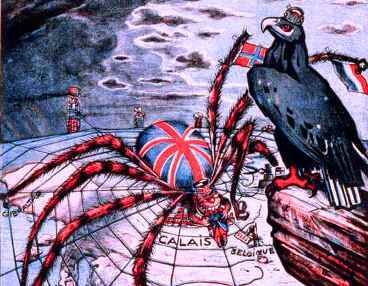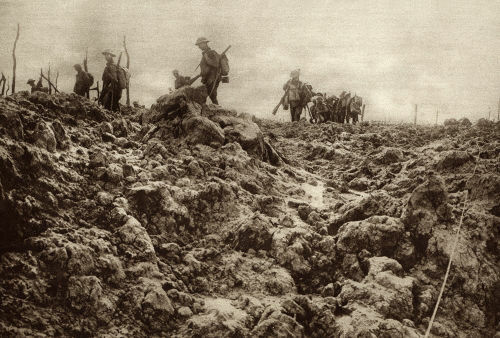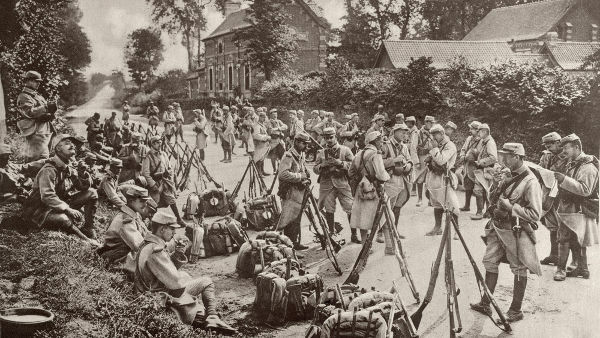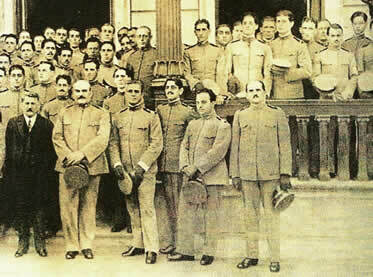The conflicts that started in 1914 were, over time, taking a different outline from that programmed by the nations involved. The “Great War”, involving the great powers of the Western world, did not have a long-term projection. None of the nations expected or was able to sustain a conflict that would go on for years. However, World War I developed over four years and three months, which ended up requiring greater efforts and different military strategies.
Efforts mobilized for the conflict gave states massive control over their economies and required the recruitment of people to fight or work for the war. Several new technologies began to be employed, showing the world a technology of destruction never seen before. Battleships, battle tanks, howitzers, submarines and planes inaugurated a new concept to the military conflicts known until then. Furthermore, as the war developed, other nations were brought to the battlefield.
Several of the colonized nations in Africa and Asia were forced to dispose of men and resources for war. The Turkish-Ottoman Empire and Bulgaria decided to support the German troops. That's because these two nations were in contention with Russia and Serbia. In 1915, signing the Treaty of London, Italy decided to support the Triple Alliance. Seduced by the promise of territorial gains in Turkey and Austria, the Italians changed their position in the conflict.
Only in 1917 did an important alliance begin to define the course of the First War. That year, the United States decided to ally itself with the Triple Entente. The North American accession took place thanks to the departure of the Russians and the interest in preserving their imperialist possessions. Involving a complex web of alliances and interests, World War I also split into two different military stages.
The first was the war of movement, when German troops made an incisive attack on France. With this strategy the Germans hoped to win the war without any major difficulties. However, the French victory at the Battle of the Marne contained the Germans' strategy. After this first moment, the conflicts entered a new phase that became known as the war of positions or trench warfare. This period involved large and painful battles, which resulted in no significant military advances for either side.
Only with the use of new technologies and the arrival of 1.2 million US soldiers, conflicts took new directions. The Germans, who until then had won most of the battles, were contained with a second defeat on French territory. England managed to subdue the Ottoman-Turkish forces and Italy defeated the Austrian armies. The victory of the Triple Entente was thus decreed.
In November 1918, the Germans were forced to sign the Compiègne armistice. Shortly thereafter, the Fourteen Points for World Peace treaty, drafted by US President Woodrow Wilson, promised the establishment of “a peace without a winner”. Even with the end of the First War, several marks were left in Europe, the predominant place of combat.
The various clashes were responsible for the death of around 8 million people and the mutilation of nearly 20 million soldiers and civilians. In addition, the European economic capacity suffered a hit that reduced the continent's agro-industrial production by almost 40%. External debt has increased exorbitantly and European currencies have suffered a sharp devaluation. The United States, other emerging countries (such as Japan, Switzerland, Denmark and Spain) and agro-exporting nations gained from the socio-economic chaos installed in the Old World.
Do not stop now... There's more after the advertising ;)
By Rainer Sousa
Master in History
Would you like to reference this text in a school or academic work? Look:
SOUSA, Rainer Gonçalves. "The Development of the First World War"; Brazil School. Available in: https://brasilescola.uol.com.br/guerras/o-desenvolvimento-primeira-guerra-mundial.htm. Accessed on June 28, 2021.
wars

Background to World War I, World War I, diplomatic agreements, race imperialist, arms race, Triple Alliance Treaty, Triple Entente, preparations for the First World War.
wars

Brazil in World War I, World War I conflicts, Triple Entente, cargo ships, German submarines, Spanish flu, Treaty of Versailles, indemnification.



